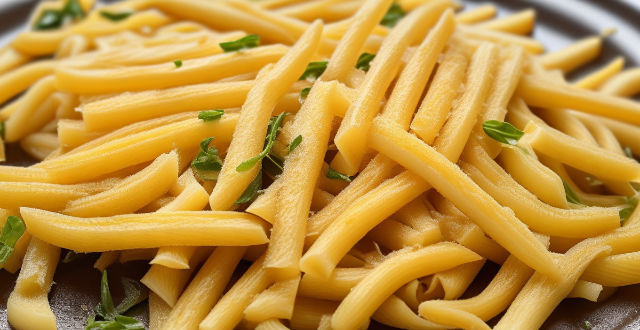To prevent pasta from sticking together when cooking, startTo prevent pasta from sticking together when cooking, start and filling it with enough water start by choosing a large pot and filling it with enough water so that the pasta can move freely. Salt the water generously to reduce sticking. Stir regularly during cooking, use plenty of water, and avoid overcrowding the pot. After cooking, reserve some pasta water for adjusting sauce consistency or reheating, rinse under cold water if not using immediately, and toss with sauce. Avoid oil in the cooking water unless specified in a recipe. Additional tips include using a timer, taste testing for al dente texture, and avoiding covering the pot.

How to Prevent Pasta from Sticking Together When Cooking
Cooking pasta perfectly requires attention to detail and a few tricks to ensure that the strands don't stick together. Here are some effective methods to achieve perfectly cooked, non-sticky pasta every time:
Before Cooking:
1. Choose the Right Pot
- Use a large pot to cook your pasta. The pot should be filled with enough water so that the pasta can move freely while cooking.
2. Salt the Water Generously
- Adding salt to the water is not just for flavor; it also helps to reduce the sticking by enhancing the boiling point of water slightly.
During Cooking:
3. Stir Regularly
- Once you've added the pasta to the boiling water, give it a good stir to separate the pieces. Continue stirring occasionally throughout the cooking process to prevent sticking.
4. Use Plenty of Water
- Ensure that you use enough water so that the pasta can move around freely. A general guideline is to use about 4 quarts of water for every pound of pasta.
5. Don't Overcrowd the Pot
- If you add too much pasta at once, it will inevitably stick together. Follow the package instructions regarding the amount of pasta per volume of water.
After Cooking:
6. Reserve Some Pasta Water
- Before draining the pasta, reserve some of the starchy cooking water. This water can be used to adjust the consistency of your sauce or to reheat the pasta if needed, without causing it to stick.
7. Rinse Under Cold Water (Optional)
- If you are not using the pasta immediately, rinsing it under cold water can stop the cooking process and prevent sticking. However, this also removes some of the starch that can help sauces adhere to the pasta.
8. Toss with Sauce
- After draining the pasta, immediately toss it with your sauce. The heat from the pasta will help the sauce cling to the strands, reducing stickiness.
9. Oil Is Not Always the Answer
- Although some suggest adding oil to the cooking water to prevent sticking, it can make your sauce less likely to adhere to the pasta. Use it sparingly or avoid it altogether unless specified in a recipe.
Additional Tips:
- Use a Timers: Set a timer for checking the pasta a minute or two before the suggested cooking time on the package. Pasta can overcook quickly, leading to stickiness.
- Taste Test: Start tasting the pasta a couple of minutes before the indicated cooking time. You want it to be al dente, which means it still has a bit of firmness to it.
- Avoid Covering the Pot: Covering the pot can cause the water to boil over and can lead to uneven cooking and sticking.
By following these steps, you'll have perfectly cooked pasta that doesn't stick together, making your meals more enjoyable and visually appealing.